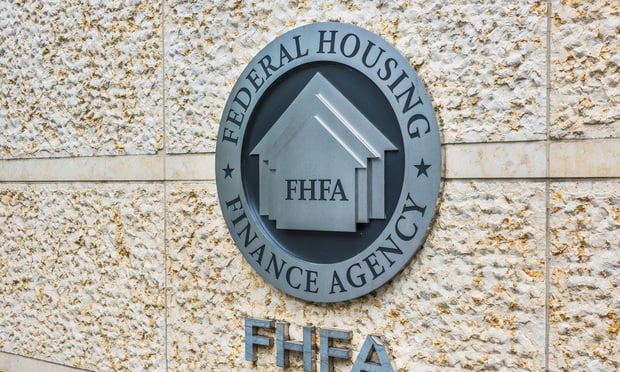
WASHINGTON, DC—The second quarter's comparatively narrow spread among the four indexes that comprise the National Multifamily Housing Council's Quarterly Survey of Apartment Market Conditions widened somewhat in Q3. Although the Market Tightness (37), Sales Volume (45) and Equity Finance (46) Indexes remained below the breakeven level of 50, the Debt Financing Index rose above 50 for the first time in five quarters.
“The apartment market is headed into a seasonally slow leasing period with new deliveries easing upward pressure on rents and occupancy rates in many markets around the country,” says Mark Obrinsky, NMHC's chief economist. “The big increase in multifamily starts in 2015 and 2016 is finally filtering through to the marketplace on a broad basis.”
Obrinsky adds, though, that leasing activity appears to have picked up in Texas and Florida in the aftermath of Hurricanes Harvey and Irma. “Some respondents also noted that fires on the West Coast may be pushing occupancy rates up,” he adds. “Elsewhere, new deliveries are leading to concessions becoming more commonplace.”
The Market Tightness Index for October decreased from 42 to 37, marking the eighth consecutive quarter of overall declining conditions in this index. Forty percent of respondents reported that conditions were looser than they were three months earlier, compared to 14% who reported tighter conditions. Forty-five percent, though, said conditions were basically unchanged, a comparable figure to the 48% who said this in the Q2 survey.
The Sales Volume Index declined two points to 45 in the latest survey. Twenty-eight percent of respondents indicated lower sales volume compared to the previous three months, compared to 19% who reported higher volume over the past quarter. Here again, a plurality (47%) said that conditions hadn't changed appreciably from Q2.
The Equity Financing Index remained unchanged at 46, with 62% reporting unchanged conditions. This marks the eighth consecutive quarter of declining conditions for equity financing, although the actual score for the index was the highest since October 2015, when it last rose above the break-even point.
The Debt Financing Index increased from 47 to 51, crossing the break-even level of 50 for the first time since July 2016, indicating improving overall conditions. Although 62% of survey respondents reported unchanged conditions, 14% believed that conditions for debt financing had become more favorable. Conversely, 12% of respondents saw a decline in conditions for debt financing compared to three months earlier.
NMHC's October Survey of Apartment Market Conditions was conducted between Oct. 10 and Oct. 17. One-hundred and thirty-nine CEOs and other senior executives of apartment-related firms nationwide responded.

WASHINGTON, DC—The second quarter's comparatively narrow spread among the four indexes that comprise the National Multifamily Housing Council's Quarterly Survey of Apartment Market Conditions widened somewhat in Q3. Although the Market Tightness (37), Sales Volume (45) and Equity Finance (46) Indexes remained below the breakeven level of 50, the Debt Financing Index rose above 50 for the first time in five quarters.
“The apartment market is headed into a seasonally slow leasing period with new deliveries easing upward pressure on rents and occupancy rates in many markets around the country,” says Mark Obrinsky, NMHC's chief economist. “The big increase in multifamily starts in 2015 and 2016 is finally filtering through to the marketplace on a broad basis.”
Obrinsky adds, though, that leasing activity appears to have picked up in Texas and Florida in the aftermath of Hurricanes Harvey and Irma. “Some respondents also noted that fires on the West Coast may be pushing occupancy rates up,” he adds. “Elsewhere, new deliveries are leading to concessions becoming more commonplace.”
The Market Tightness Index for October decreased from 42 to 37, marking the eighth consecutive quarter of overall declining conditions in this index. Forty percent of respondents reported that conditions were looser than they were three months earlier, compared to 14% who reported tighter conditions. Forty-five percent, though, said conditions were basically unchanged, a comparable figure to the 48% who said this in the Q2 survey.
The Sales Volume Index declined two points to 45 in the latest survey. Twenty-eight percent of respondents indicated lower sales volume compared to the previous three months, compared to 19% who reported higher volume over the past quarter. Here again, a plurality (47%) said that conditions hadn't changed appreciably from Q2.
The Equity Financing Index remained unchanged at 46, with 62% reporting unchanged conditions. This marks the eighth consecutive quarter of declining conditions for equity financing, although the actual score for the index was the highest since October 2015, when it last rose above the break-even point.
The Debt Financing Index increased from 47 to 51, crossing the break-even level of 50 for the first time since July 2016, indicating improving overall conditions. Although 62% of survey respondents reported unchanged conditions, 14% believed that conditions for debt financing had become more favorable. Conversely, 12% of respondents saw a decline in conditions for debt financing compared to three months earlier.
NMHC's October Survey of Apartment Market Conditions was conducted between Oct. 10 and Oct. 17. One-hundred and thirty-nine CEOs and other senior executives of apartment-related firms nationwide responded.
Want to continue reading?
Become a Free ALM Digital Reader.
Once you are an ALM Digital Member, you’ll receive:
- Breaking commercial real estate news and analysis, on-site and via our newsletters and custom alerts
- Educational webcasts, white papers, and ebooks from industry thought leaders
- Critical coverage of the property casualty insurance and financial advisory markets on our other ALM sites, PropertyCasualty360 and ThinkAdvisor
Already have an account? Sign In Now
*May exclude premium content© 2025 ALM Global, LLC, All Rights Reserved. Request academic re-use from www.copyright.com. All other uses, submit a request to [email protected]. For more information visit Asset & Logo Licensing.








